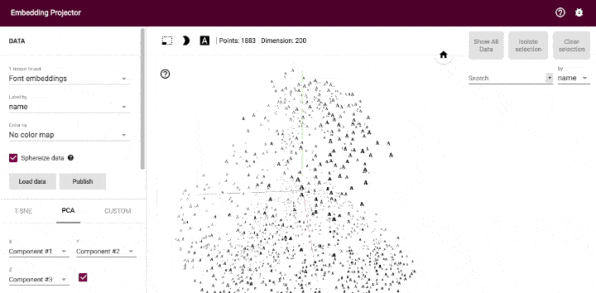
Maybe you’re just feeling uninspired. Maybe you took a job that pays less than you’re worth. Look, I’m not here to judge. We’re all going to be working for AI in a few years anyway. So in the meantime, we might as well cash in on some easy work, compliments of the machines.

Fontjoy and Colormind are a pair of neural nets developed by freelance designer and engineer Jack Qiao. What do they do? They’ll find you a unique pairing of fonts or colors, respectively–which could make that next website or graphic design project a lot easier to produce.

FontJoy works by analyzing letterforms, sorting them within its mind, and then “systematically find[ing] fonts that share similarities but contrast in a key way.” That means mixing and matching typefaces in a way that looks pleasing and surprising, the way any human designed would. It might suggest you use a serif for a header and sans serif for a subhead. That bit is important for creating visual contrast. But upon closer analysis, you might note that they share a weight, obliqueness (slant), or other feature that quietly makes them work well together. This is basically the same way a designer would produce a font pairing–just with cold calculated logic.

Meanwhile, Colormind will produce five-color palettes with a button press, and that magic is possible because Qiao trained a neural network by feeding it data from Adobe Color and Qiao’s own taste for good combinations. In this respect, Colormind seems to be a reverse engineered Adobe product, a piece of software that has learned a skill from another piece of software–which is a somewhat frightening thought, for those developing algorithmic IP. (That’s also more or less how Style Transfer works, which uses software to clone a human-made artistic style.)Both FontJoy and Colormind are free to use, and will display the font names and color values generated for easy adoption. But of course, whether or not they pass your taste test is a different question entirely.
–
